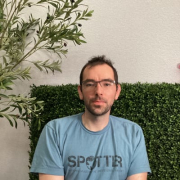

Find out in this report how the two Application Performance Monitoring (APM) and Observability solutions compare in terms of features, pricing, service and support, easy of deployment, and ROI.
| Product | Market Share (%) |
|---|---|
| ITRS Geneos | 1.1% |
| Dynatrace | 8.9% |
| Datadog | 7.4% |
| Other | 82.6% |
| Product | Market Share (%) |
|---|---|
| Splunk Enterprise Security | 9.2% |
| Wazuh | 10.2% |
| IBM Security QRadar | 7.0% |
| Other | 73.6% |


| Company Size | Count |
|---|---|
| Small Business | 6 |
| Midsize Enterprise | 12 |
| Large Enterprise | 39 |
| Company Size | Count |
|---|---|
| Small Business | 110 |
| Midsize Enterprise | 50 |
| Large Enterprise | 257 |
ITRS Geneos is a real-time monitoring tool designed for managing increasingly complex, hybrid and interconnected IT estates.
Built with financial services and trading organisations in mind, it collects a wide range of data relating to server performance, infrastructure, trading, connectivity and applications, and analyses it to provide relevant information and alerts in real time.
Geneos can give full stack visibility across highly dynamic environments and presents all the information through a single pane of glass and its configurable and customisable dashboards provide end-to-end visibility to both technical and business users.
For more information, please visit https://www.itrsgroup.com/products/geneos
Splunk Enterprise Security delivers powerful log management, rapid searches, and intuitive dashboards, enhancing real-time analytics and security measures. Its advanced machine learning and wide system compatibility streamline threat detection and incident response across diverse IT environments.
Splunk Enterprise Security stands out in security operations with robust features like comprehensive threat intelligence and seamless data integration. Its real-time analytics and customizable queries enable proactive threat analysis and efficient incident response. Integration with multiple third-party feeds allows detailed threat correlation and streamlined data visualization. Users find the intuitive UI and broad compatibility support efficient threat detection while reducing false positives. Despite its strengths, areas such as visualization capabilities and integration processes with cloud environments need enhancement. Users face a high learning curve, and improvements in automation, AI, documentation, and training are desired to maximize its potential.
What Are the Key Features of Splunk Enterprise Security?In specific industries like finance and healthcare, Splunk Enterprise Security is instrumental for log aggregation, SIEM functionalities, and compliance monitoring. Companies leverage its capabilities for proactive threat analysis and response, ensuring comprehensive security monitoring and integration with various tools for heightened operational intelligence.
We monitor all Application Performance Monitoring (APM) and Observability reviews to prevent fraudulent reviews and keep review quality high. We do not post reviews by company employees or direct competitors. We validate each review for authenticity via cross-reference with LinkedIn, and personal follow-up with the reviewer when necessary.